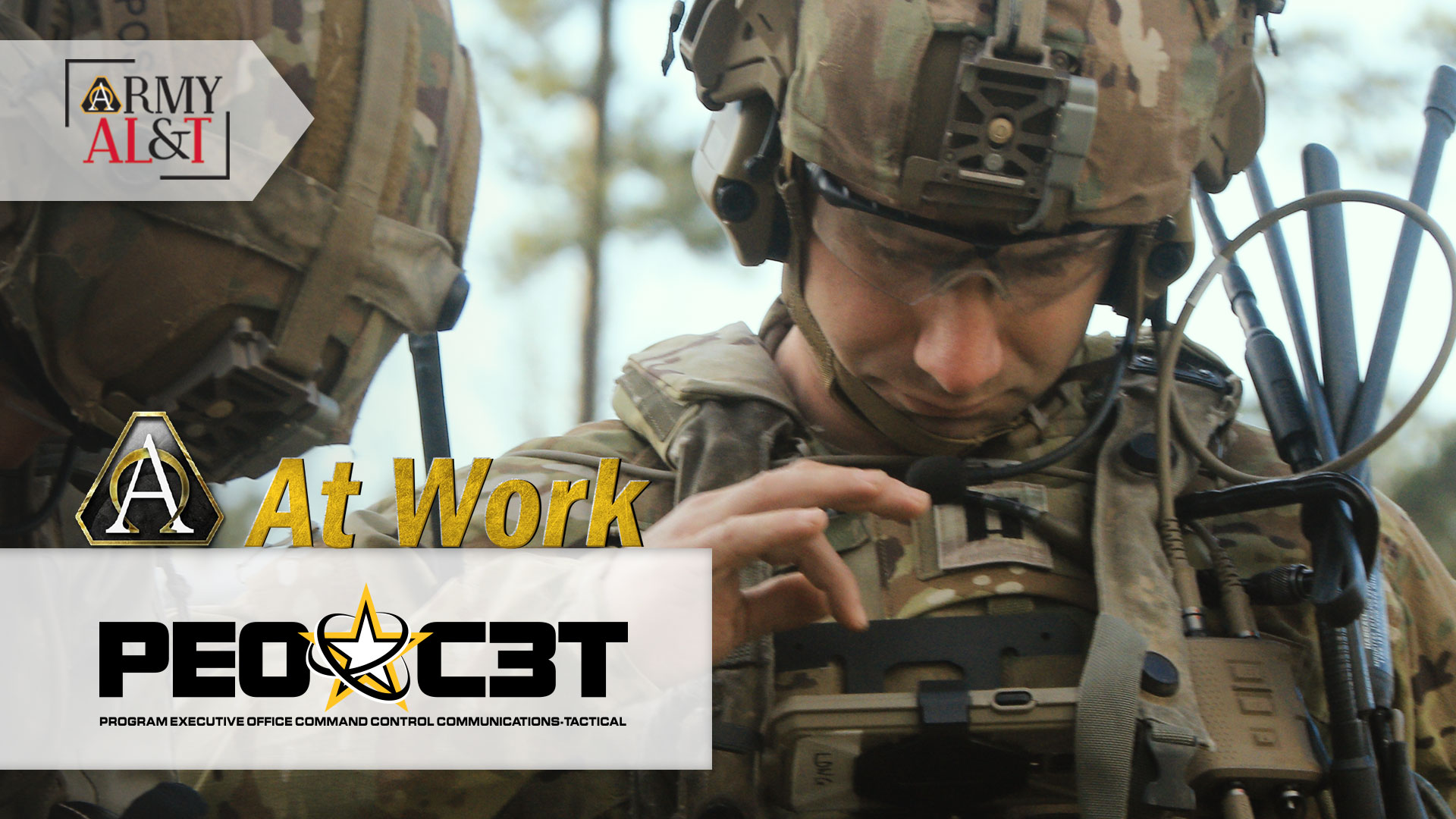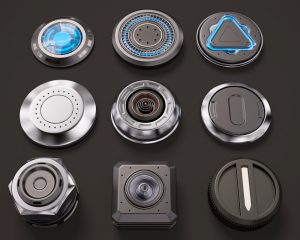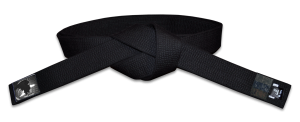By Michael J. Ravnitzky
We need to go faster! SECDEF Mattis wrote in the Summary of the 2018 National Defense Imagine how useful it would be if procurement and acquisition specialists had real-time insights on how military consumables were performing in the field. Are Soldiers reporting that the new 5.56 ammo jams more frequently than the older stuff? Does the latest batch of Army boots disintegrate when they get wet? Does a specific brand of batteries get depleted too quickly in field use? Is the latest MRE an awesome improvement that every Soldier loves?
Under our existing procurement model, getting answers to such questions in real time is largely impossible. But it doesn’t have to be this way. There are two mechanisms that can easily make this task possible, and everyone is familiar with both of them: the five-star product or service rating system and an app.
Rapid feedback from warfighters would dramatically improve the acquisition model for consumable items such as boots, batteries, and clothing, and for services. It’s urgent to have these insights, especially now, as acquisition continues to shift from military specifications to off-the-shelf, commercial products.The payoff would be huge: potentially avoiding procurement of faulty or unsatisfactory items, improving effectiveness and even saving lives with better products for our warfighters, which making better use of taxpayer dollars.
Information Army Buyers Need
Today, a growing percentage of the items that Soldiers, Sailors, Airmen, Marines and Coastguardsmen consume are commercially sourced. This trend will continue because of obvious cost advantages and the ability to rapidly and efficiently supply field needs. Unfortunately, the quality of commercial products can vary widely in civilian life, even more so when used in military field conditions. Civilians often turn to Amazon customer ratings for guidance, but there is no direct equivalent in military acquisitions.
Currently, acquisition focuses on performance at the time of delivery rather than performance in field service. In fact, it largely ignores the satisfaction of the end user. The questions government buyers ought to be equipped to answer are: How well does the item hold up in use or in storage? How well does it work with other equipment? Does it break easily? How well does it run compared to equivalent products? Does it hamper or delay operations? Fundamentally, does the end user swear by it, or swear at it. These are all important factors to the Soldiers who use the items on a regular basis. However, user feedback data that answers these questions are typically unavailable to the buyer.
Determining “contractor responsibility” (the means and ability to complete the contract in question) is a significant aspect of the acquisitions process. Nevertheless, in the process of buying commercial products for Soldiers, one important factor is missing: the utility of a product in actual service. How the products actually work for the warfighter should be an aspect of contractor responsibility determination. But current reviews or best-value criteria often do not look beyond the company’s own quality checks.
An App to Fill the Gap
There could be an app for that. An app—accessible on any mobile device—would allow users of military consumables to provide feedback, to rapidly identify for acquisition staff (and engineers) when products are working well, or experiencing problems. The data could be used by buyers to identify and address emerging concerns, something that is impossible to do today.
The widely used five-star rating system used by online commerce as well as brick-and-mortar businesses provides purchasers with valuable and easily understood information to assess perceived product quality and confidence in sellers. Such ratings are useful even when the data is unreliable, inaccurate, or biased. In our personal purchase decisions, even “noisy” data proves useful when considered in aggregate.
For consumers, the star rating system turns widely individual subjective numerical feedback into collective objective comparisons. Narrative comments describe what works well or poorly about the product. Reading a narrative description provides one way that we can judge the reliability of an online review.
A star rating system can do more than indicate product quality. It can show the degree to which users like or dislike the product. It can answer questions such as: Are problems being corrected? Is user satisfaction addressed? Is the vendor responsive to customer concerns?
The warfighters’ generation is familiar with online ratings and with apps. For Soldiers, especially those serving overseas, online purchases are a necessity—an indispensable lifeline to home. These Soldiers are already familiar with the process of giving star ratings and narrative comments for a wide variety of purchased products, and how to share their views and concerns about a product or service. The app would also be a way to tap into the powerful informal Soldier information network (“the grapevine”) for issues that might otherwise go unreported.
It is the Soldiers, supply sergeants, and supply officers who are in the best position to spot problems with regularly purchased products. Reporting ratings can be done in most operating environments because computers are used nearly everywhere and mobile phones are accessible in many locations. An app of this type could include the ability to hold onto a rating report offline until the user reaches a place where the phone could connect and deliver the data securely, for operational security or connectivity reasons.
Design Considerations
The primary focus of a warfighter feedback app is simplicity and usability. It should be easy to search and find the product type or brand. Beyond the basic star ratings, the app should also allow the user to type in descriptive text or enter that text via the audio-to-text features standard on most mobile devices. The use of narrative text entry data fields is essential in providing necessary flexibility for feedback. The use of check boxes for a series of particular problem types, as well as an “other” category, provides an additional way to save time.
The acquisition rating app could show optional boxes to provide relevant data input such as part number, serial number, lot number or manufacturer or vendor name. But it would be counterproductive to require that these boxes be filled in, because Soldiers may not have ready access to all of this data and rigid restrictions could discourage participation. The app potentially could allow for photos of the item to be uploaded with the rating, also saving the need to type equipment detail.
In fact, many items purchased by DOD already incorporate Item Unique Identification Marking (IUID), allowing a smartphone to capture the QR Code as an easy way to link the comments to the product in question. This would use a rich data resource that already exists. The warfighter would aim their phone or device, the software would determine if there is a readable QR code; if so, it captures the code, and if not, it accepts a photo of the item, QR code, or other available identifying information such as barcode, or label. The user would then tap the star rating and could add comments, perhaps even voice-to-text comments.
Such simple reporting would provide early recognition of an issue, to allow Soldiers to trigger an alert if a problem is occurring with a product, or offer a kudo. A data dashboard could capture and display situations involving low ratings that might merit quicker attention from an assigned response team, or from the responsible acquisition professional. However, the system would not be intended to provide comprehensive data or guarantee an immediate acquisition response.
Anonymity permits candid, objective feedback. At the same time, it would be helpful to allow commenters the option of providing their contact information for later follow-up.
Using the Data
After designing the user experience and establishing a path for the data to be collected and assessed, it could be used in two ways. First, feedback data from warfighters could be made available to contracting professionals through a gateway that would allow easy access to data associated with the product being purchased. This would allow members of the acquisition workforce to know of ongoing concerns before they place new orders for a particular product. This could help avoid follow-on purchases of consumable items when end-users are strongly dissatisfied with their quality.
Second, a review of the data could identify red flags for subject matter experts or engineers – particular instances of poor design or substandard manufacturing resulting in Soldier concerns. This would allow DOD to identify such problems earlier and to address them faster and more systematically.
The Value of a Warfighter Feedback Channel
In the civilian sector, there is an effective feedback mechanism: customers vote with their pocketbook. But in the military, the end user is not the purchasing decision-maker, and so a key element—Soldier feedback—is missing. This data would enable the key decision maker, military acquisitions, to make better, more informed purchasing decisions to support warfighters.
Data collected from a warfighter feedback app would identify problems with items purchased for the military earlier and would minimize the delay or loss of problem reports. It would speed the recognition of product quality issues among procurement professionals, and it would reduce the chance of reordering deficient products. It also would provide an easier, data-driven way to ensure contractor responsibility for supplied products, ideally leading to faster corrective action.
Customer feedback is paramount to acquisition performance. It is essential that Soldiers know that their thoughts and concerns about critical equipment and supplies are reaching the proper ears, and that those ears are the acquisition experts who are responsible for putting those products in their hands. It could also improve job satisfaction and morale by providing Soldiers a way to transmit field concerns about Army-purchased products, with the reasonable expectation that the issues will be addressed. In addition, acquisition professionals would find it satisfying and rewarding to know that they have better capability to respond to the warfighters they support.
An App to Improve Acquisition
Current smartphone app technology with an easy-to-use star-rating process can provide a powerful and timely opportunity for acquisition professionals to collect key data from warfighters about the quality, effectiveness and utility of frequently purchased military items, particularly for consumables, and perhaps for services. This mechanism would provide valuable input to people who make purchase decisions and who strive to provide the best products at the best price to best serve our armed forces.
__________________________________
Michael J. Ravnitzky works in the Contracting Division at the Naval Sea Systems Command in Washington, D.C. He holds a B.A. in Physics from Cornell University and a J.D. (with honors) from Mitchell Hamline School of Law.
















